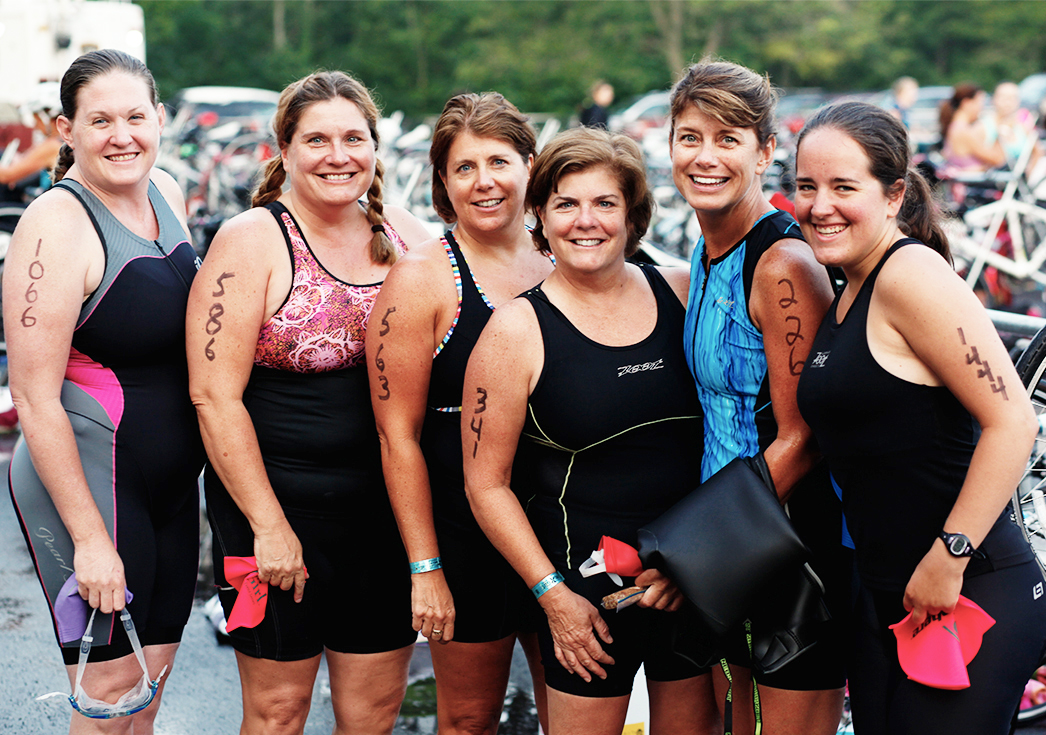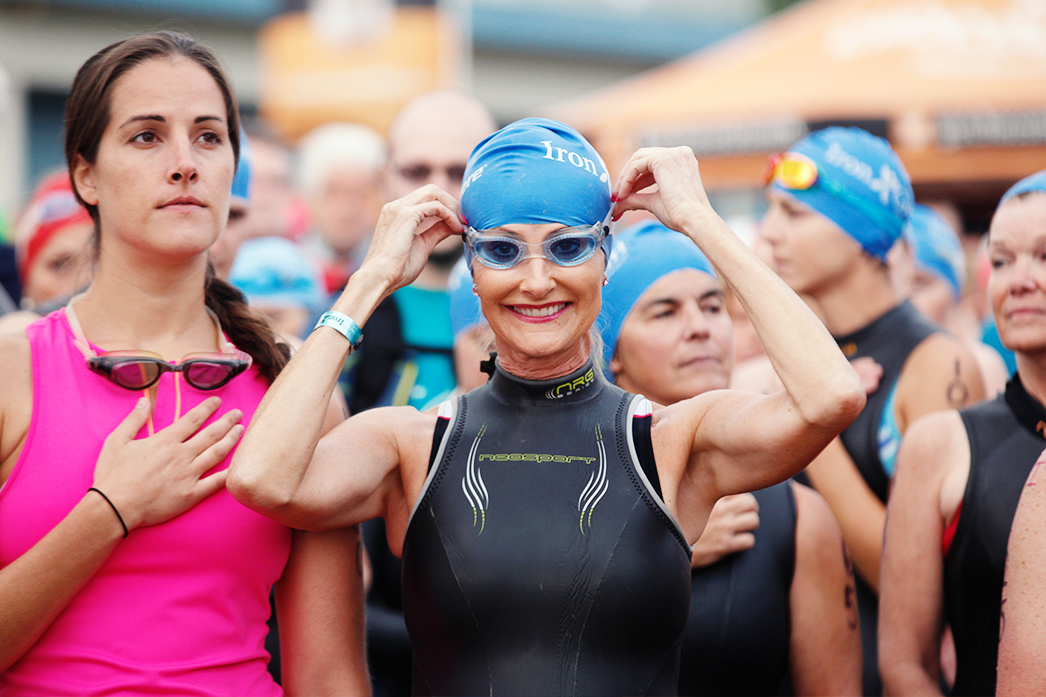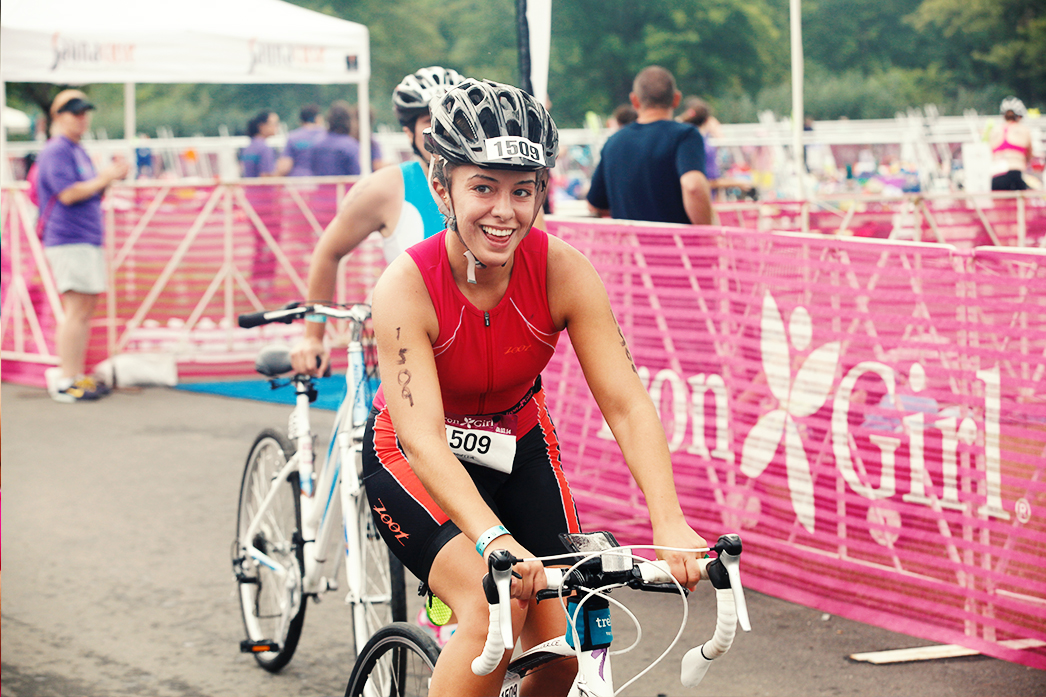As women we know that what we wear on race day must not only be practical, but must also make us feel incredible. Race day is our day. We are empowered women, dedicated to strength and performance. We expect nothing less of our attire. Be prepared for your first race with these simple guidelines:
Your First Triathlon
Your first race is all about comfort and experimenting with what works for you. Typically, a first-time triathlete will wear a swimsuit for the swim with a sports bra or supportive swimsuit top underneath, and then pull cycling shorts on during T1 (first transition).
Tip: Applying baby powder to your bike shorts before the race will help you slide into them smoothly as well as eliminate painful chafing that may occur.
The second transition (T2) can consist of replacing your cycling shorts with running shorts. Anything that is comfortable and keeps you covered in transition works well.
Perfect the Presentation
Once you start racing consistently, a typical race ‘kit’ would include a singlet (tri top) and triathlon shorts, or a one-piece tri suit. Triathlon racing attire is designed for speed, flexibility and comfort in all three disciplines. Many tri suits and singlets have a pouch or compartment for gels or any other fuel you may need to carry with you along the course.
Wetsuits
Wetsuits are not mandatory, however they become a viable option in wetsuit-legal races. Note: A water temperature below 78 degrees constitutes a wetsuit-legal race. Check with the race director and listen for announcements as to whether a race is wetsuit legal or not. Wetsuits typically provide more buoyancy and insulation during the swim, but may require more time in transition to remove, especially in shorter races where there are no wetsuit peelers and transition time is of greater concern. If you choose to use one, it is best to practice removing it quickly prior to race day. There is no pressure to buy or rent a wetsuit for your first triathlon even if it is wetsuit legal. Many triathletes have gone several seasons before actually purchasing a wetsuit to utilize at races.
Smooth It Over
Swimsuits and tri suits have a tendency to expose seams and other potential annoyances. Race day is not the time to deal with the distraction of chafing and blisters. Some sort of anti-chafing skin protectant, such as Body Glide, is always recommended for any seams on your body and feet, groin, under arms or other potential areas of irritation. Prevention is key—and applying anti-chafing skin protectant before the race and (if necessary) during the transitions can make your race experience much more enjoyable.
Perhaps the most important guideline is the ‘nothing new on race day’ rule. It is highly recommended you do a few ‘test runs’ of your race gear so as to combat any potential problems before they arise.
Sense of Support
One of the common questions women have about racing is what kind of support they should wear underneath their swimsuit or tri suit. Some women can get away with a tight triathlon suit, while others are more comfortable in a sporty swimsuit top or a moisture-wicking sports bra that will not get saturated during the swim. Make sure all your attire, including your sports bra, is ‘tried and true’ come race day.
Weather
While most triathlons take place during the warm summer months, some duathlons and the occasional triathlon require additional layers of clothing to combat colder race climates. There is a variety of attire made from materials created to block wind permeability that also maintain the ability to transport body moisture away from the skin during a race. Windbreakers, headbands, and even arm and leg warmers can be a crucial addition to the cold weather race wardrobe.
Race Number Belts
Iron Girl events require that a race number be worn on both the bike and the run. A race number belt serves as a great alternative to safety pinning your number to your bike shorts, t-shirt or swimsuit. If you are planning to use a race number belt, attach your bib to the belt and leave it in transition at the start of the race.
After exiting the swim, simply grab the race belt from transition, fasten it and continue racing.
Socks, Sunglasses, Gloves, Hat
Temperature-related attire is largely dependent on the race conditions and the amount of time you plan to take in transition. Socks are a good idea if you are concerned about blisters or rubbing, however many triathletes opt to go sockless for a faster transition time. Sunglasses and cycling gloves are typically worn as an added comfort for longer races, but often eliminated for the shorter distances.
Additionally, moisture-wicking hats can be a great asset to help tolerate the heat during the run portion of the triathlon. Most importantly, find what works for you, and correlate your transition needs with your specific race goals.
Remember, the most important thing to wear on race day is a smile. See you at the finish line!
Read more: What to Wear on Race Day http://www.irongirl.com/Train/What_to_Wear_on_Race_Day.htm#ixzz71Ztw40h3



